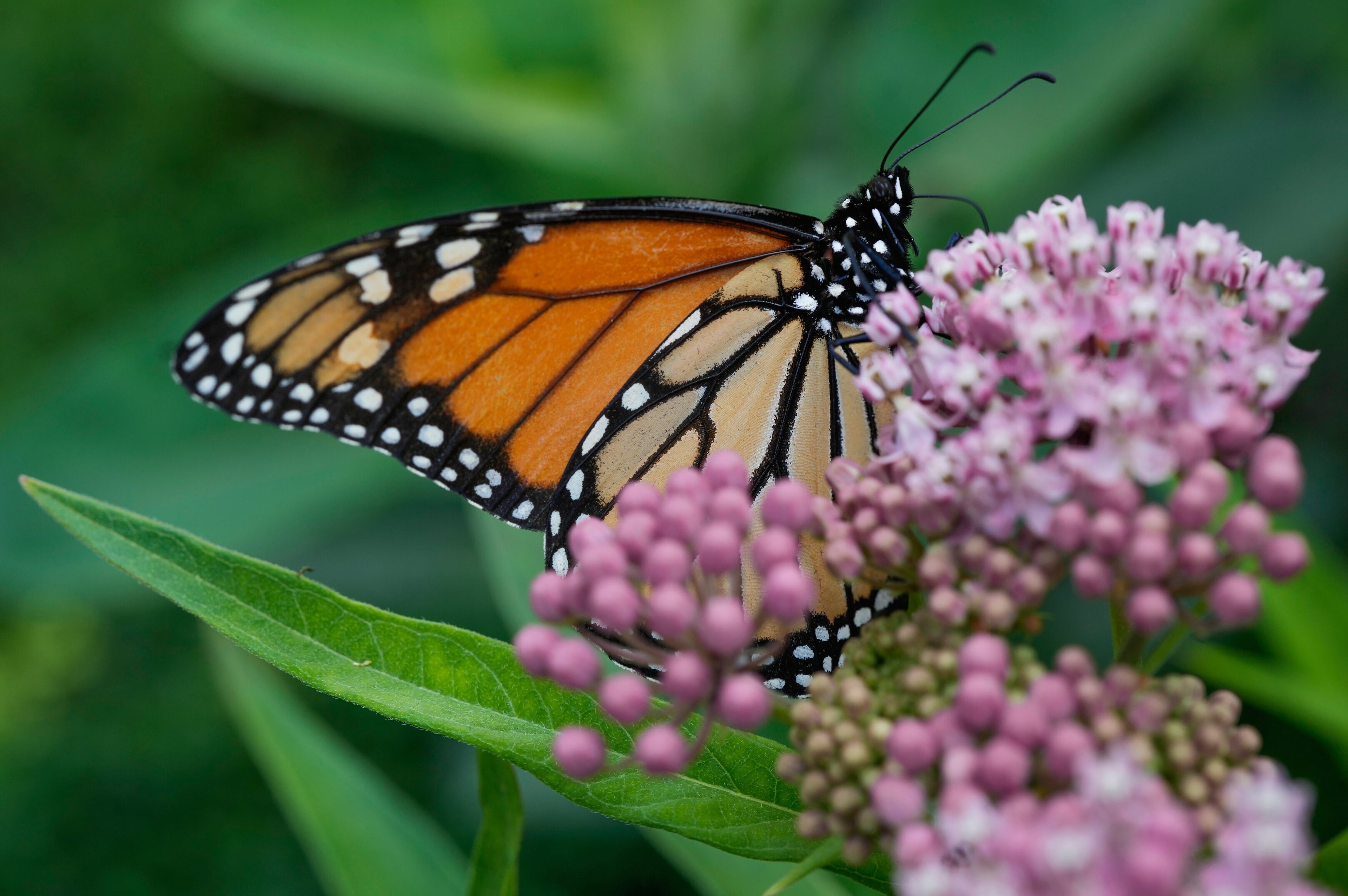Why a divisive weed killer may come back to Georgia farms
Last year, in a victory for environmental groups, certain uses of a weed killer sprayed in fields in Georgia and across the country were barred by a federal court.
Now, to the satisfaction of many cotton and soybean growers, the federal Environmental Protection Agency may allow farmers to use the herbicide again. But not all agriculture interests are on board with the move, fearing it could harm other crops, along with plants and wildlife on adjacent lands.
On Friday, EPA officials, along with Georgia agriculture leaders and experts, gathered on a farm about an hour east of Atlanta to discuss the federal agency’s recent proposal to allow restricted use of dicamba.
Dicamba has been around since the 1960s, when it was first approved for use in the United States. But it soared in popularity after 2015, when the biotechnology giant Monsanto released the first cotton and soybean seeds genetically modified to be resistant to dicamba.
Farmers who use the GMO seeds can spray their fields with dicamba to kill nuisance plants like pigweed, a fast-growing pest that can devastate yields, while the soybeans and cotton they want to grow are left unscathed. Today, nearly all cotton and soybeans grown in the U.S. are engineered to tolerate herbicides like dicamba, according to the U.S. Department of Agriculture.
In 2024, Georgia produced an estimated $747 million of cotton, second only to peanuts as the state’s most valuable crop, USDA data shows. Georgia produced nearly $80 million of soybeans last year.
The EPA’s assessment of dicamba’s human health effects found it’s not likely to cause cancer, but could pose some occupational hazards to people who apply the herbicide, like skin, eye and respiratory irritation. There have also been reports of damage caused to other plants by dicamba “drift” away from fields where it’s sprayed.
The EPA now says dicamba does not threaten aquatic species or plants and poses a “low risk” for honeybees, but earlier agency assessments identified “potential adverse effects.”
Last year, three dicamba products were yanked from the market after a federal court in Arizona ruled the EPA skirted its own procedures when it allowed “over the top” application of the herbicides on cotton and soybeans. After the ruling, the EPA granted farmers permission to use existing stocks of dicamba until their supplies ran out.
But farmers without stockpiles, like Lee Nunn — who grows cotton, corn, wheat and soybeans on 1,600 acres near Madison — were out of luck. Nunn, who used dicamba on his fields before the court ruling, said it’s been difficult to go without it this year.
“It’s hard enough for us to do what we do out here,” Nunn said. “To tie one of our hands behind our backs … it’s been tough.”
In late July, the EPA released a proposal to allow the dicamba products back on the market, with restrictions. The agency’s proposal includes a long list of measures it said should limit “ecological risks.” Those include caps on the concentration of dicamba, a ban on aerial application and prohibitions on spraying in extreme heat, specifically temperatures above 95 degrees.
Stanley Culpepper, an agronomist with the University of Georgia Cooperative Extension — which provides science-based support to farmers across the state — said he believes the dicamba products should be reauthorized, calling them a critical tool for farmers.
“If our farmers don’t have a way to control the pest, they can’t provide us (animal) feed, food and fiber,” Culpepper said.
Still, he and others would like to see the EPA’s proposal tweaked. Among his concerns are the potential limitations on dicamba use in extreme heat, which the EPA says will help keep the chemical from drifting off target.
Georgia already regularly sees temperatures above the 95 degree threshold, and extreme heat is expected to become more common. Culpepper said he believes heat restrictions would hamstring Georgia farmers and urged the EPA to consider rules that allow more flexibility.
Even among UGA’s agricultural scientists, there’s disagreement about whether the potential return of dicamba is a good thing.
UGA experts have documented damage dicamba appears to have caused to pecan trees and other crops. The herbicide can mangle leaves, destroy limbs and potentially kill entire trees.
Mark Czarnota, a horticultural weed specialist at UGA, said he fears dicamba-laden runoff could contaminate water supplies and harm crops that aren’t engineered to tolerate the herbicide. Damage to Georgia’s blueberries, now the state’s most valuable fruit crop, are a top concern, he said.
Czarnota said he’d like to see more testing done before dicamba is allowed back on cotton and soybean fields.
“The product just worries me,” he said. “It’s one of those that keeps you up at night.”
In response to questions about concerns about dicamba “drift,” EPA spokesman James Pinkney said the agency uses a “robust” ecological assessment to address areas of risk.
“The agency welcomes feedback from all stakeholders and will take that feedback into consideration before making a final decision,” Pinkney said.
Some environmental and food safety groups are staunchly opposed to the herbicide’s possible reintroduction.
Nathan Dooley, from the Arizona-based Center for Biological Diversity, said everyone, except farmers who grow GMO soybeans and cotton that can withstand dicamba, will lose if it’s allowed back. The CBD was one of several plaintiffs in the federal case that led to the dicamba ban.
“You lose your crops, backyard gardens and the trees that line Main Street to herbicide damage, and you lose your ability to choose the soy or cotton seeds you want to buy,” Dooley said.
For now, the EPA has only floated dicamba’s reintroduction, and the product is not yet back on the market. The agency is accepting public comments on the move now through Sept. 6.



